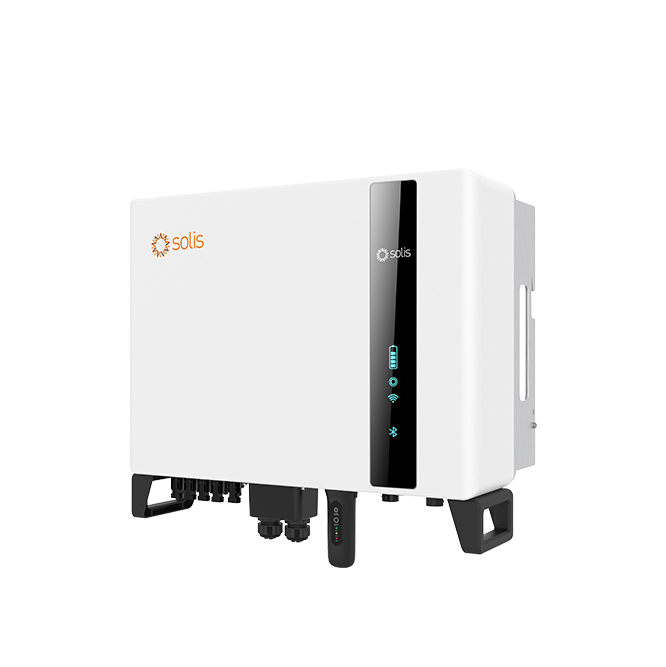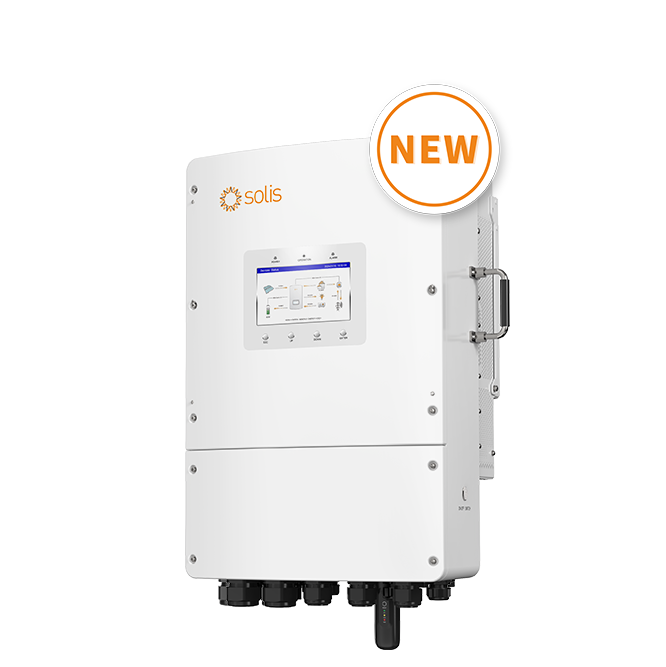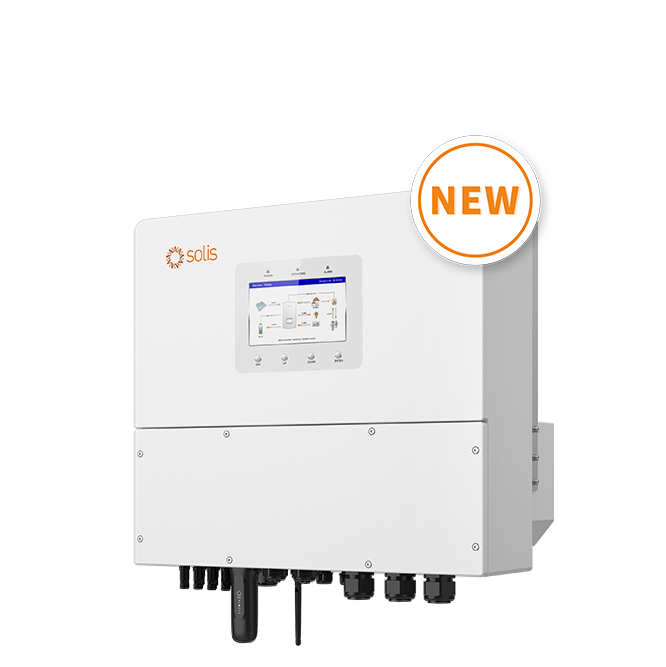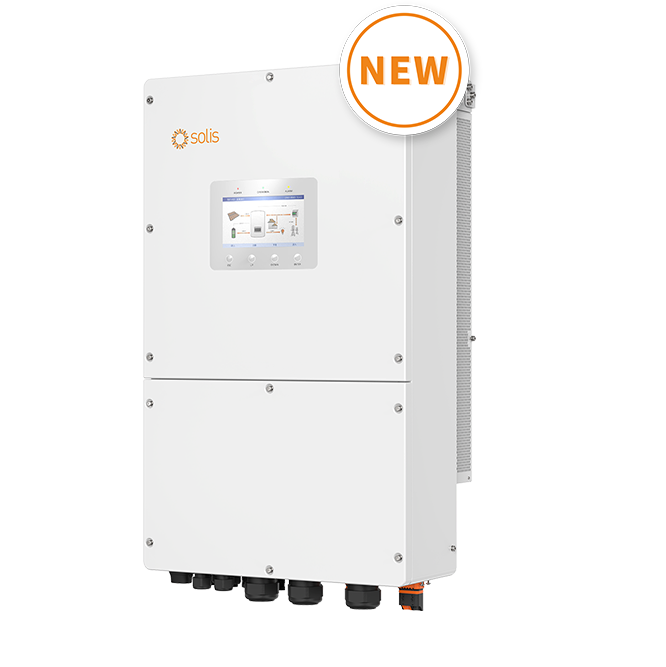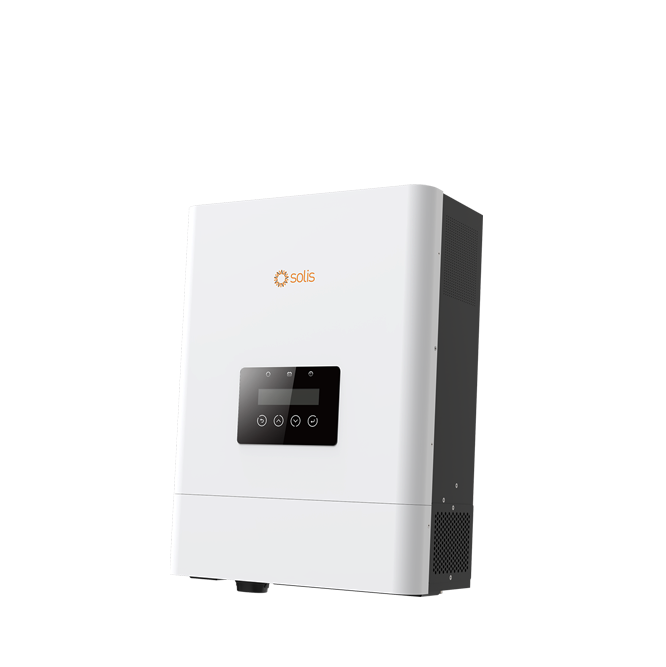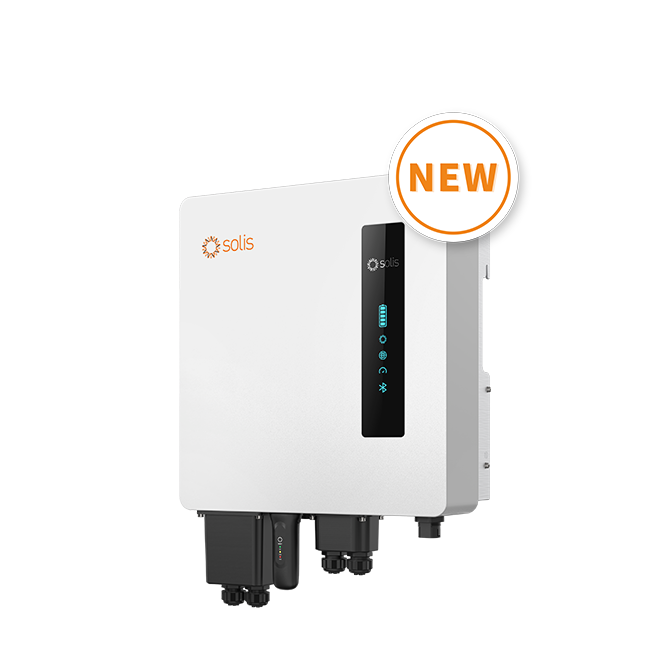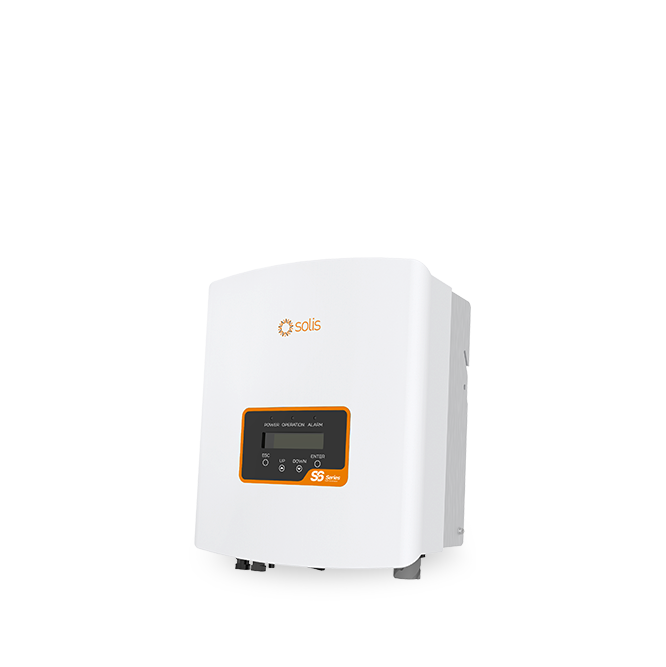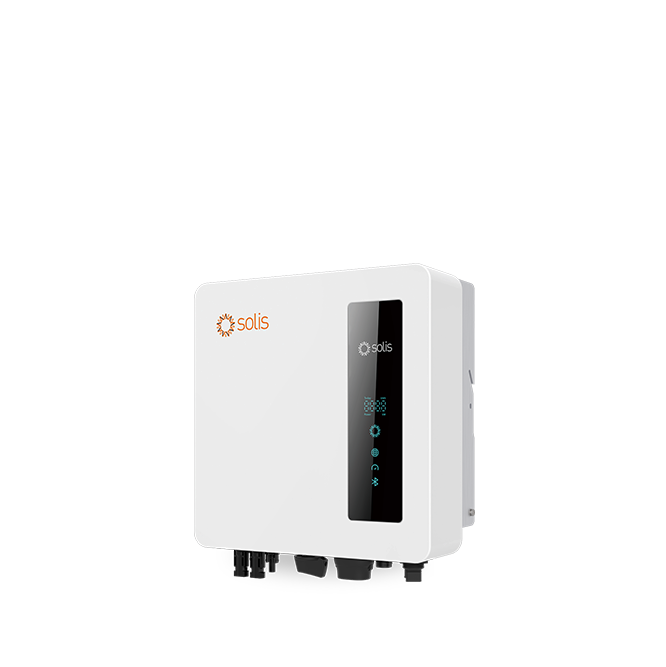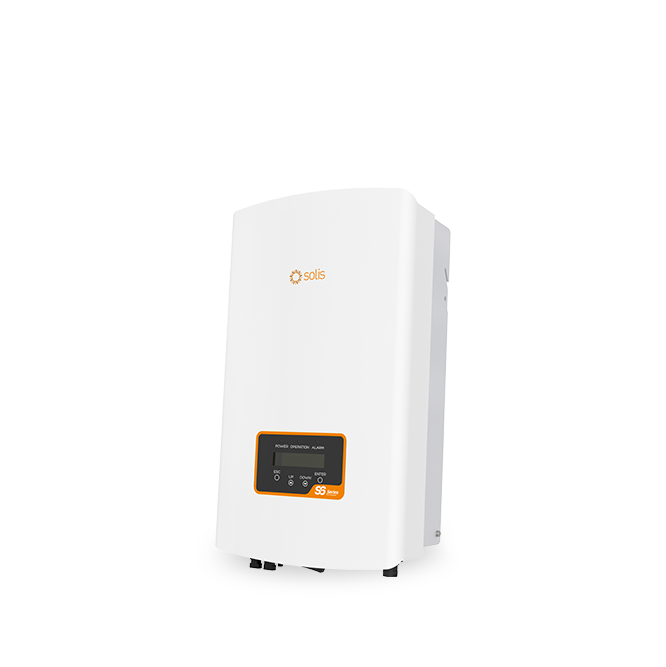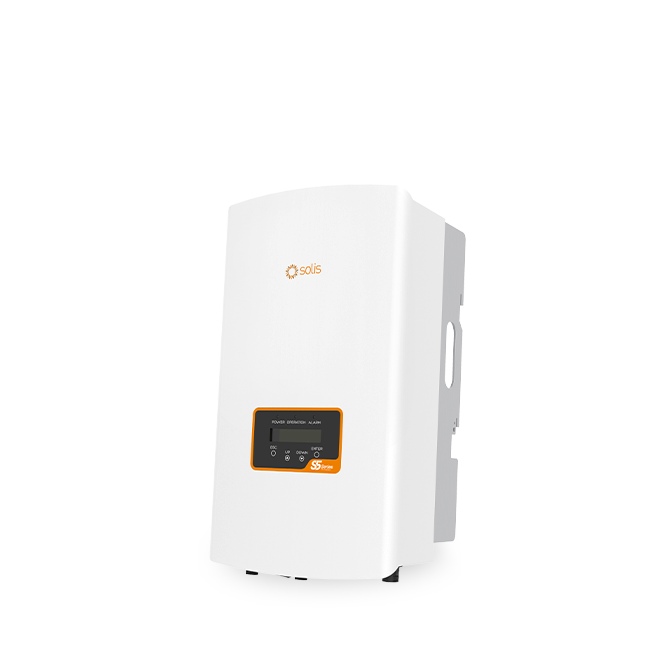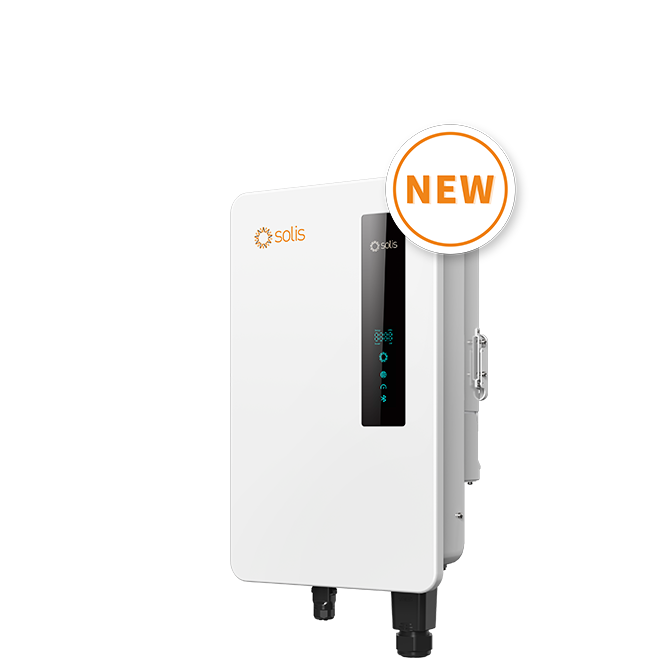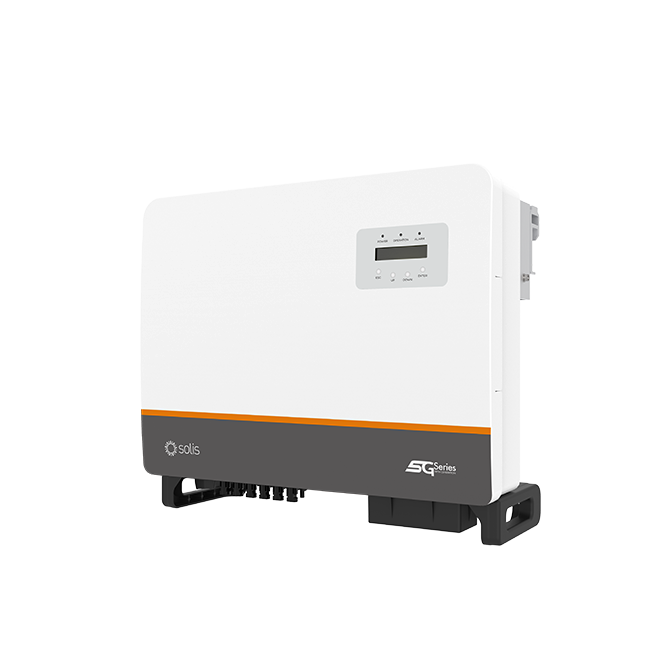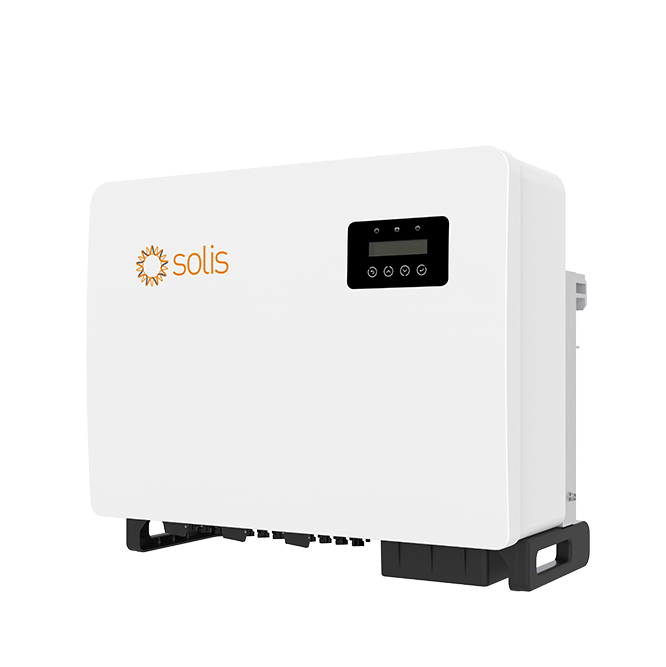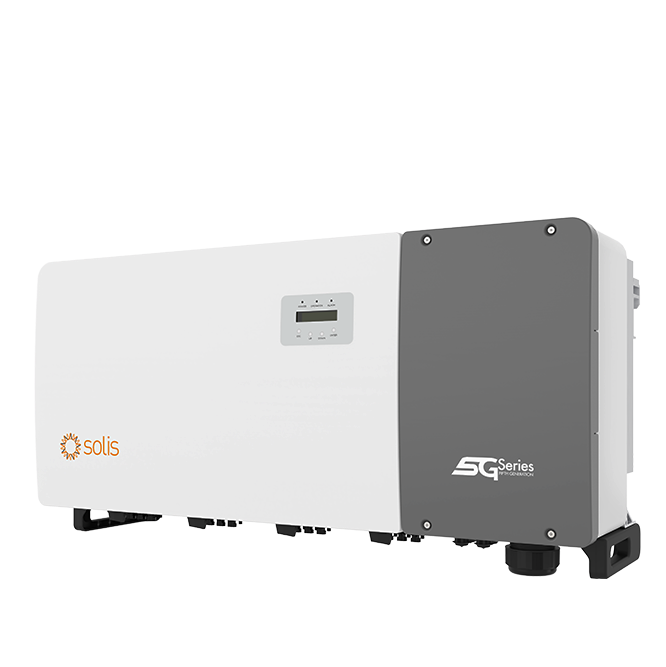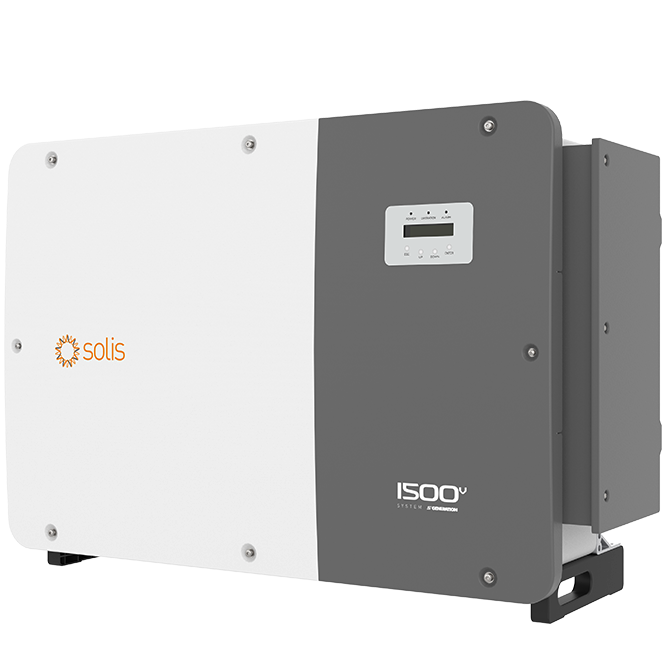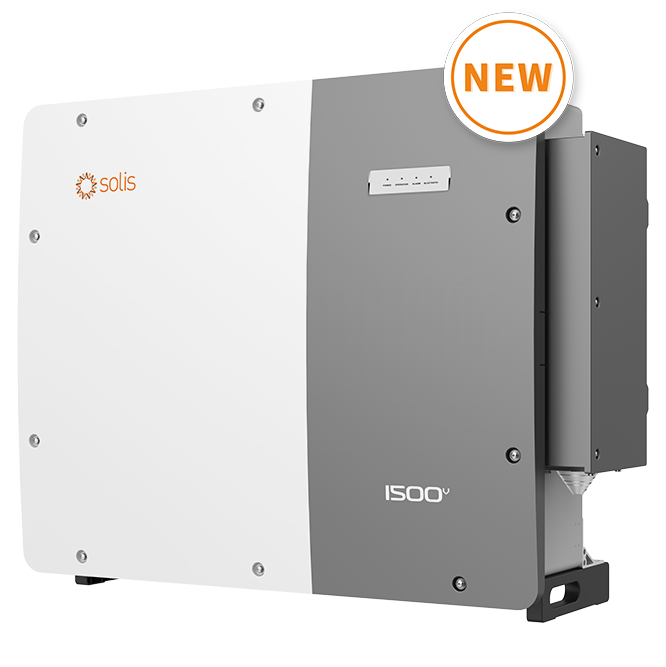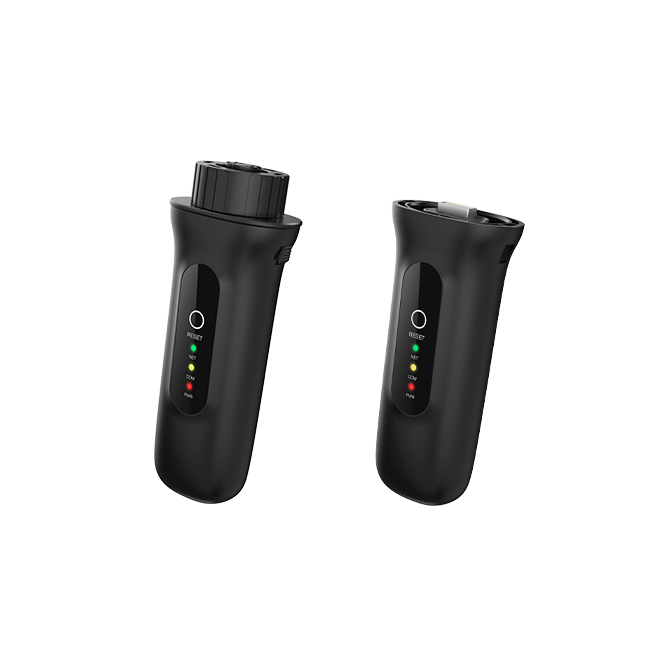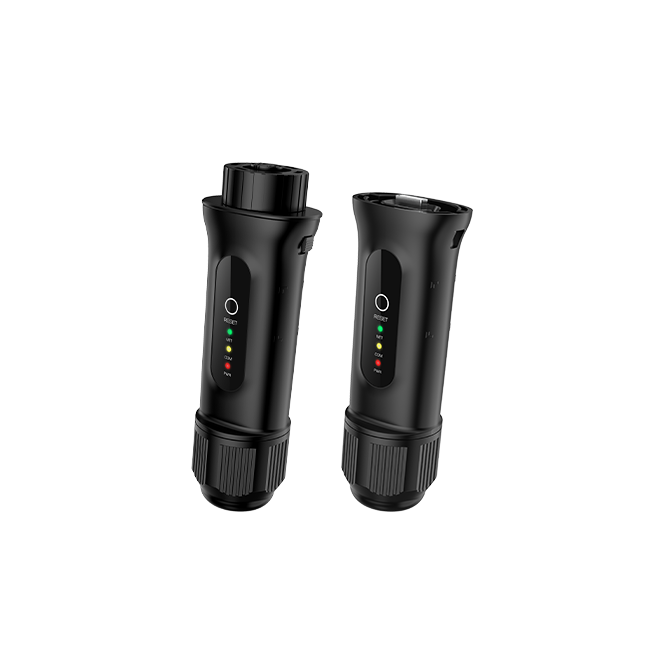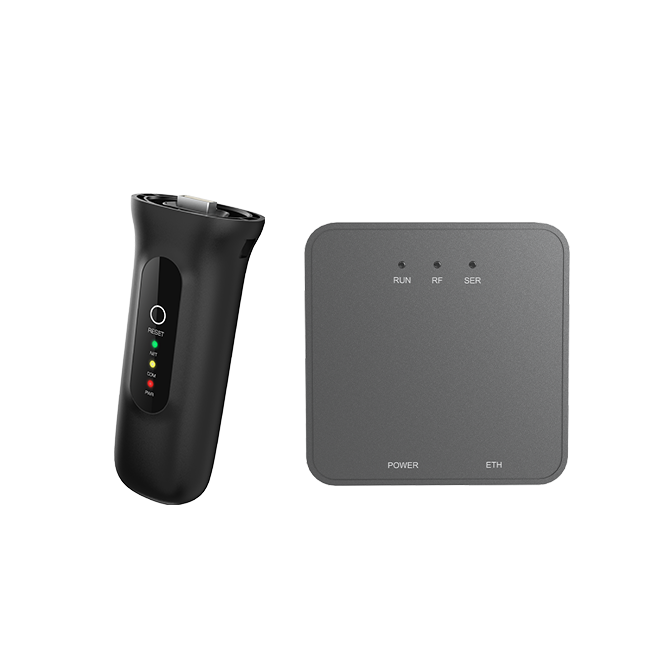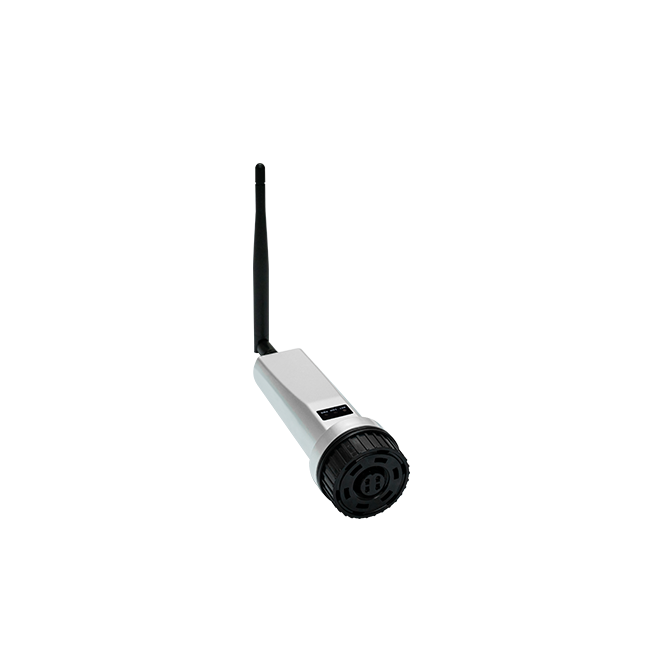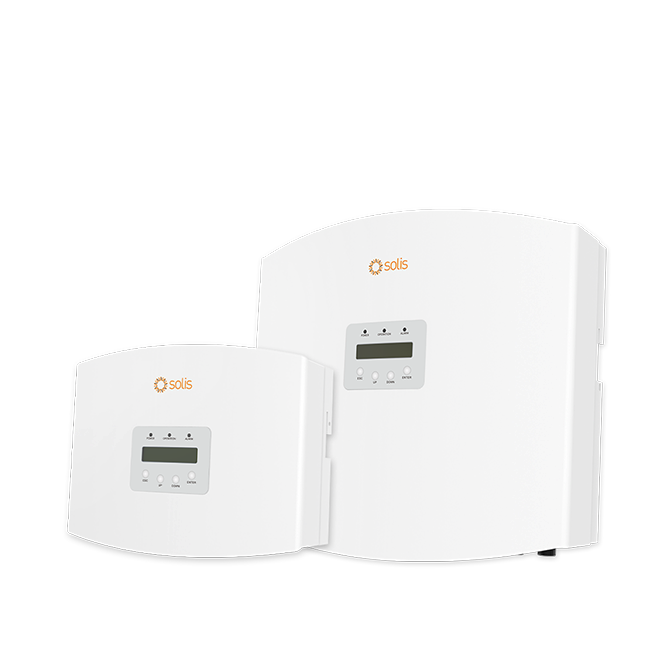Download
Background
PV inverters often need to be installed outdoors, which requires attention to installation details to combat environmental challenges. This Solis Seminar highlight key protective considerations providing valuable insights for installers to enhance equipment safeguarding.

Examples and solution
Example: The installation position is in a dip or the installation height fails to meet requirements, it may lead to the inverter or cable port being exposed to water.
Solution: Refer to the product manual for installation spacing, the bottom of the conventional installation inverter is≥500mm from the ground; For tilt-mounted installations, the distance from the inverter AC-DC waterproof joint to the roof should be ≥300mm to prevent water or snow impact. For some mountainous power stations, if the inverter is in a depression prone to water accumulation, it’s recommended to move the inverters and distribution boxes to higher ground or indoors temporarily before the rainstorm.
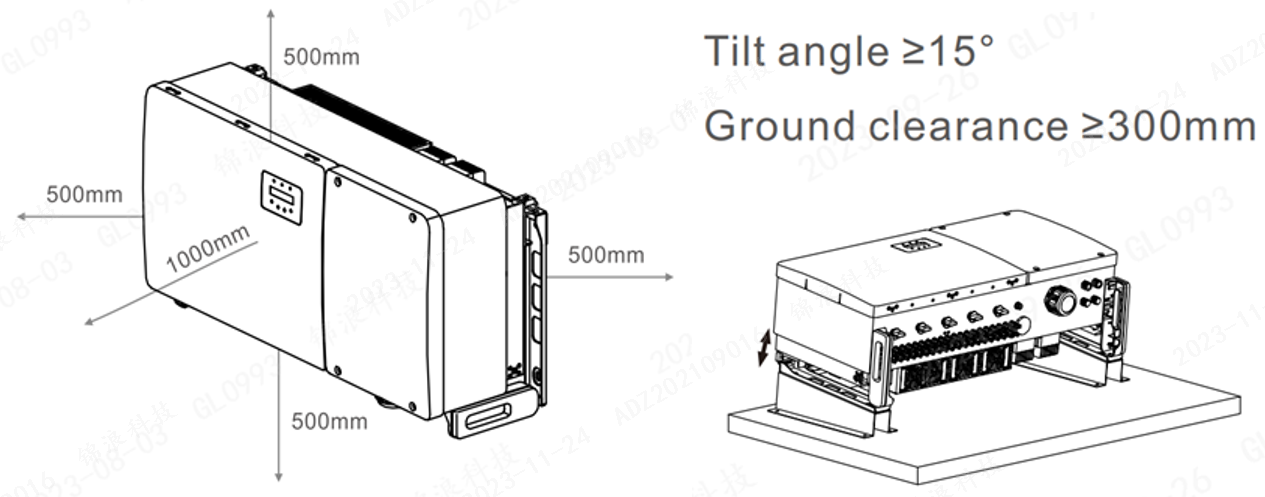
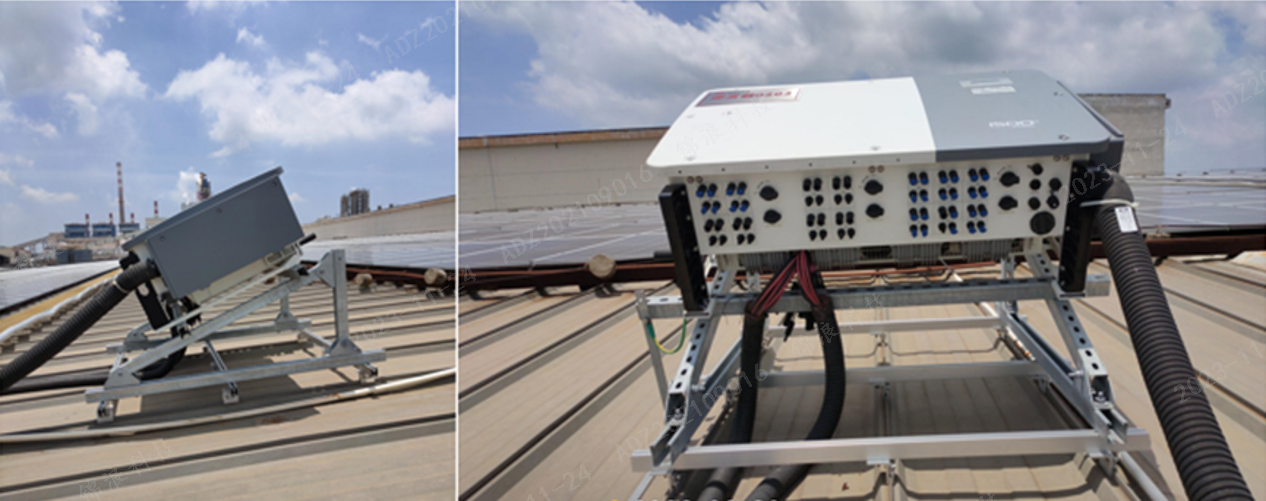
Example: Rainwater enters the equipment through the DC interface;

Solution: Ensure a reliable DC connection with tightened wire nuts. In addition, ports that are not connected to the PV string must be sealed with a matching cover to prevent rain or water vapor from entering the device through the DC port.
Example: Rain or water vapor enters the device through the AC interface.
Solution: AC cable selection needs to be appropriate, and pay attention to problems such as wire sleeve processing and installation process, mainly including:
① Reinstall the sealing ring in the port's sealing cover
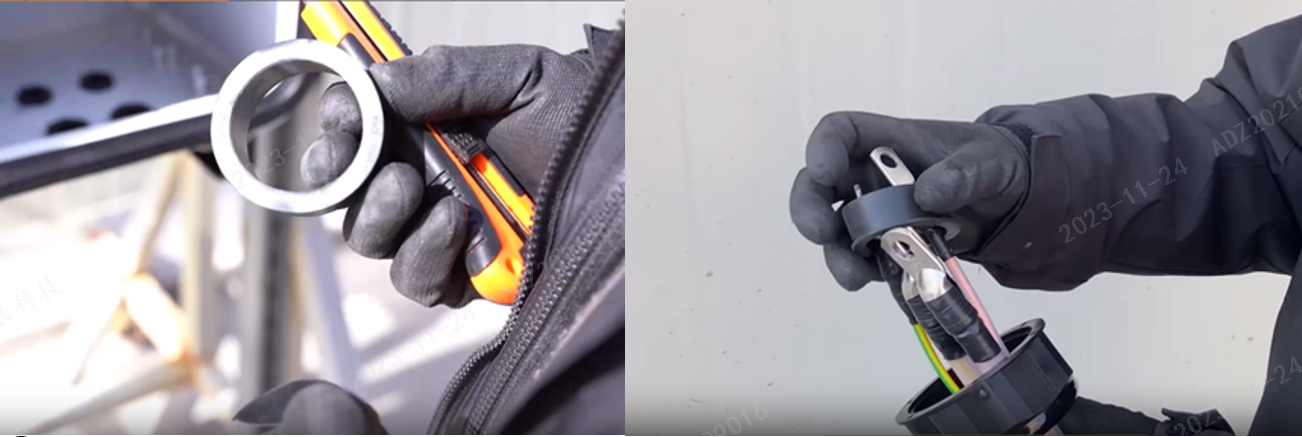
② The diameter of the AC cable must meet the requirements, and the sheath processing is too long, the sealing ring pruning is too large, etc., will hinder the sealing cover’s fit to the cable, resulting in poor air tightness

③Ensure that the AC seal cover is tightly fastened to the AC cable
Example: Rainwater enters the device through the communication port
Solution: The plastic film over unused communication ports must be kept intact. If broken, use fire mud or waterproof tape and other measures to seal it.

Example: The sealing of the cover plate on the AC side is damaged
Solution: Pay attention to avoid damage to the plastic seal between the metal cover; Ensure that each screw hole of the cover is secured with screws and the screws are tightened.

Example: External water enters the inverter through the pipe or cable. In some field installations, the communication line, AC line, ground cable and other cables have protective sleeves outside, one end of which extends to the inverter wiring bin, and the other end is often high and has an opening, so that rainwater can flow into the inverter through the pipe.
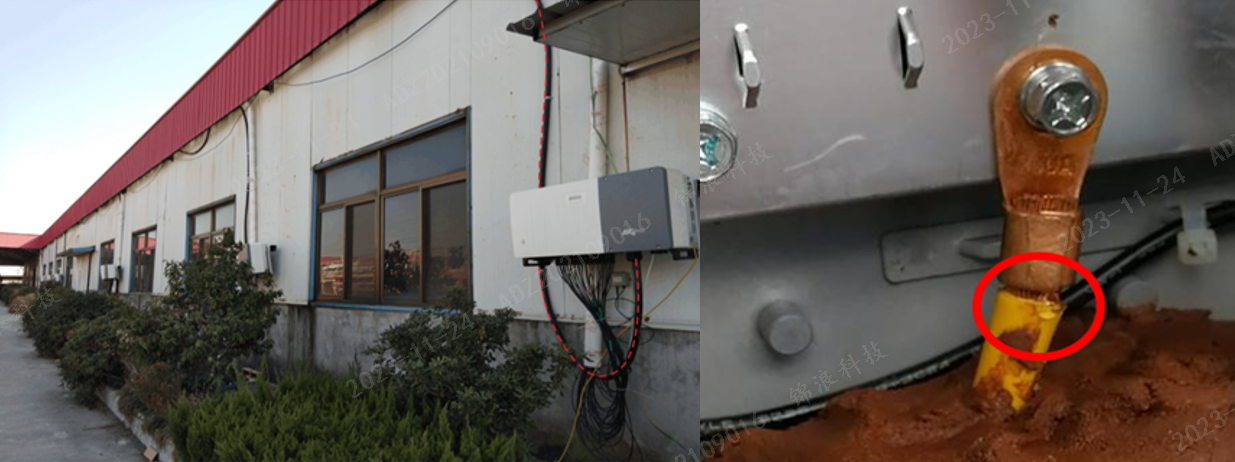
Solution: Create a gap at the bottom of the casing, allowing rain water to flow out Alternatively position the sleeve port outside the cable bay, prohibiting water from entering the inverter. In addition, the ground cable terminal connected to the AC side of the inverter must be treated with a heat shrink sleeve to prevent rainwater from entering the inverter through the ground cable sleeve.
Conclusion
The protection level of PV inverters is above IP65, and its sealing can effectively prevent foreign bodies such as sand and rain from reaching the interior. However, during the installation process, construction problems such as dismantling and wiring are involved, so it is necessary to pay attention to the installation and protection details to avoid debris entering the interior of the inverter and causing issues.

 中国
中国
 India
India
 Việt nam
Việt nam
 Australia
Australia
 대한민국
대한민국
 پاکستان
پاکستان
 ประเทศไทย
ประเทศไทย
Filipino
 Malaysia
Malaysia
 Bangladesh
Bangladesh
 Sri Lanka
Sri Lanka
 Türkiye
Türkiye
 United Kingdom
United Kingdom
 France
France
 Deutschland
Deutschland
 Nederland
Nederland
 España
España
 Polska
Polska
 Україна
Україна
 Italia
Italia
 Sverige
Sverige
 Česká republika
Česká republika
 Ireland
Ireland
 България
България
 Português
Português
 United States
United States
 Canada
Canada
 México
México
 Brasil
Brasil
 República de Chile
República de Chile
 South Africa
South Africa
 المملكة العربية السعودية
المملكة العربية السعودية
 الجمهورية اللبنانية
الجمهورية اللبنانية
 امارات عربية متحدة
امارات عربية متحدة
 اليمن
اليمن
 المملكة الأردنّيّة الهاشميّة
المملكة الأردنّيّة الهاشميّة
 جمهورية مصر العربية
جمهورية مصر العربية
 la République Tunisienne
la République Tunisienne
 Kenya
Kenya
 Tanzania
Tanzania
 Nigeria
Nigeria
 Other Countries and Regions
Other Countries and Regions
